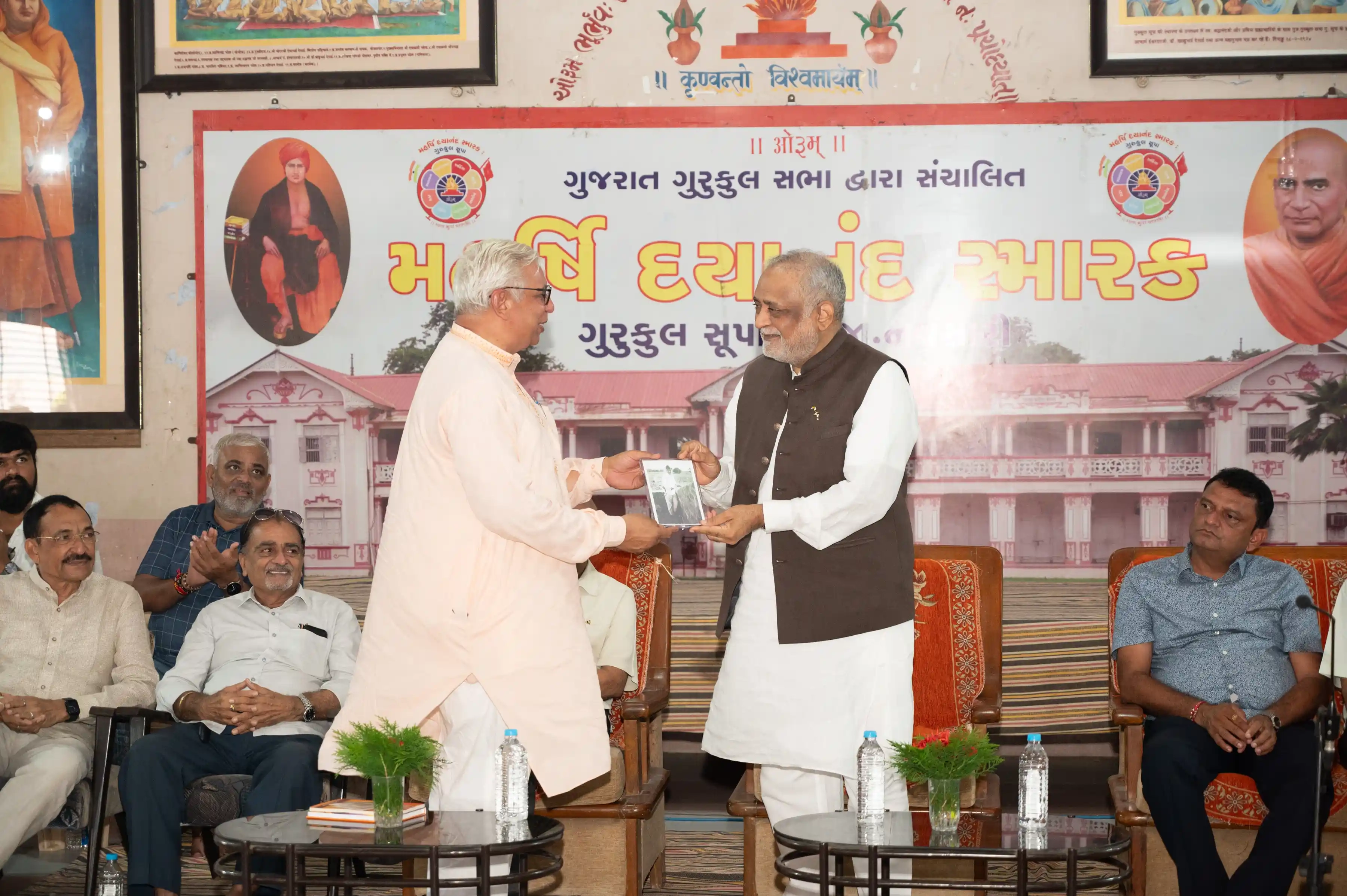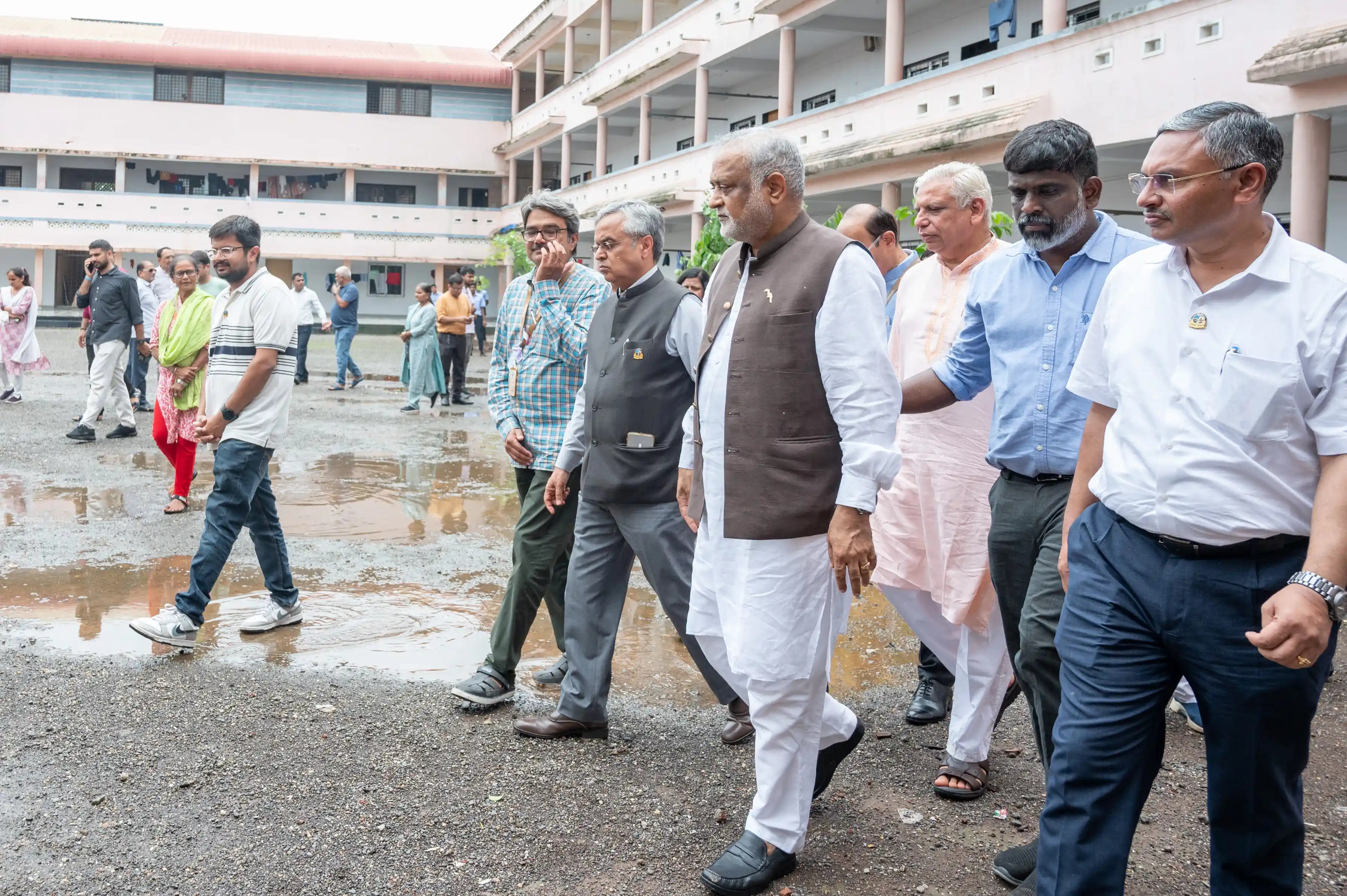A live journal of blessed activities in and around Kanha with Daaji
Simple tips to avoid making mistakes by Daaji
Archive
Last 5 entries
Navsari, Gujarat 5th August 2024
Nearly five decades later, Daaji revisited his alma mater, Maharshi Dayanand Smarak Gurukul, at the invitation of its trustees, making it a heartfelt trip down memory lane.
When invited to speak, Daaji said, “Being here in the sacred land of this gurukul is flooding my heart with fond memories. My pranams to this sacred land. My pranams to the flora, the skies, the earth and the water of this sacred land. My pranams to you, dear students, and my prayers for you. My pranams to teachers, and respected trustees.”
In 1970, Daaji’s father enrolled him in a gurukul, believing that a traditional education would instill discipline in his teenage son. [A gurukul (guru=teacher, kul=family) is a Vedic education system where students live with their teachers and learn from them.] Daaji, then in 9th grade, spent two years at the gurukul. Nearly five decades later, he revisited his alma mater at the invitation of its trustees, making it a heartfelt trip down memory lane.
Established by Swami Shraddhanand in 1924 in the village of Supa, in the Navsari district of Gujarat, the Maharshi Dayanand Smarak Gurukul embodies the vision of Shri Dayanand Saraswati, Indian reformer and founder of the Arya Samaj, to integrate Vedic traditions into modern education. The gurukul has been visited and influenced by some of the India’s greatest contributors including Mahatma Gandhi, Sardar Vallabhai Patel, Subhas Chandra Bose, Morarji Desai, Kanhaiyalal Munshi, Ravishankar Vyas Maharaj, and more recently, the Hon’ble Prime Minister of India, Narendra Modi. To this celebrated list, Daaji’s name now shines just as brightly, his visit serving as a humble tribute to the gurukul that shaped part of his remarkable journey, further enriching the gurukul’s legacy.


On the cloudy morning of 5th August, Daaji was welcomed at Supa with great pomp and ceremony including a performance by the gurukul’s marching band, after which he was escorted to the Yogshala by the invitees. The setting of the hall exuded an informality that lent a sense of homeliness to the atmosphere. The audience comprised local Heartfulness practitioners, local ministers, and the gurukul authorities, staff and students. One unit of students was dressed in traditional attire and sitting on the floor cross-legged in the manner of ancient Sanskrit scribes. The program began with a havan that is part of the daily activities at the gurukul. [A havan is a fire ritual that includes prayerful chanting while making offerings. Vibrations from the chanting and energy generated during the havan are believed to harmonize the physical, mental, and spiritual aspects of an individual.]
After the havan, many introductions of Daaji were made in great reverence, according to him the status of an international celebrity. A framed photograph of Daaji as a young student at the gurukul was presented to him, augmenting the nostalgia of the occasion.







When invited to speak, Daaji said, “Being here in the sacred land of this gurukul is flooding my heart with fond memories. My pranams to this sacred land. My pranams to the flora, the skies, the earth and the water of this sacred land. My pranams to you, dear students, and my prayers for you. My pranams to teachers, and respected trustees.”
Daaji’s entire talk was directed to the students. His attention was fully focused there, as if he was having a conversation solely with them. He spoke in his mother tongue Gujarati, striking a chord in many a heart. Here are some translated excerpts from his speech.
- Mantras give direction, but it is we who have to walk the path. By walking I don’t mean to walk outside with your legs, I mean walk within, walk the inner path. The spiritual yatra (journey) is not going from one dhaam (pilgrimage) to another; that is merely a tour. Even Dayanandji and Shraddhanandji meditated.
- A student should remain a student all his/her life and continue to learn, to self-educate. On the spiritual level, these [educative] opportunities are unlimited, but our efforts there are nil—zero. Here in the gurukul, you have an opportunity to begin that effort. The gurukul teaches us discipline. How many of you have come here to learn and how many of you have been sent here to be set straight? (One boy shouted loudly and honestly in response, “To be set straight!” This made Daaji laugh heartily, prompting him to say, “I too was sent for the same reason by my father, who was fed up with my naughtiness. So take this opportunity and advance in spirituality.”)
- If there was ever a person in India who truly opposed idol worship, it was Shri Dayanand Saraswati. Why did he do so? Why did he establish the Arya Samaj? You should find out. I have seen many students from the gurukul who—‘bhanya pan ganya nahi’—received an education but did not apply its learnings in a meaningful way: they still carry on with idol worship. Then why have you come here to learn Dayanand Saraswati’s principles?
- So learn about the mantras we just chanted. What do they really mean? Read the vedas—all four of them, the Rigveda, Samaveda, Atharvaveda and Yajurvaveda. You won’t find a single mention of a temple or idol worship in any of them. Figure out why and once you find out, implement it in your lives. We have to grow physically, mentally and spiritually. But we have forgotten the last one. So hold on to that last one—spiritual growth. And when you graduate from here, remember how to meditate. Research on how to meditate, because it is only through meditation that one can progress spiritually.
- When I was your age, I used to flip through the Mahabharata and Ramayana. I also only just saw the illustrations, never read them then, because it is fun to see the colourful pictures. But even from the pictures one can learn—Shri Rama of Ayodhya meditating, and beside him Sita, also meditating. In the Mahabharata, Lord Krishna meditated before the war started. As children, we can ask our parents, “Krishna is God. Then what is he meditating for? Whom is he meditating on? So you all think about it. If Lord Krishna needs to meditate then what about us?
- So I say to you, when you all grow up to be 15, start meditation. Till then, read, learn, and absorb knowledge. Read about great saints, scientists (like Einstein) both ancient and modern, the Nobel laureates from last year—study them. Which scientist received the Nobel Prize in which field, for which research, discovery? So students must be well-versed in modern knowledge. The gurukul education must integrate contemporary dissemination as well.




After the speech, Daaji took a tour of the gurukul, revisiting his old haunts. In the courtyard of the student dormitory he planted a tree. Earlier in his speech, Daaji had mentioned how he was very sad to see that the old trees and the lush greenery had all but vanished from the gurukul. He expressed a wish that he would like to see it green again like it was in the past and encouraged the authorities to revive the campus. He promised he would send a Heartfulness team to organize a plantation drive. Later, he had lunch at his old mess, where they served a particular dish that Daaji had been very fond of during his time there.
Daaji’s visit to his alma mater was more than just a nostalgic trip—it left a lasting impression on all who attended. His words and actions were a reminder of the timeless values imparted by the gurukul, ensuring that its legacy continues to inspire generations to come.





